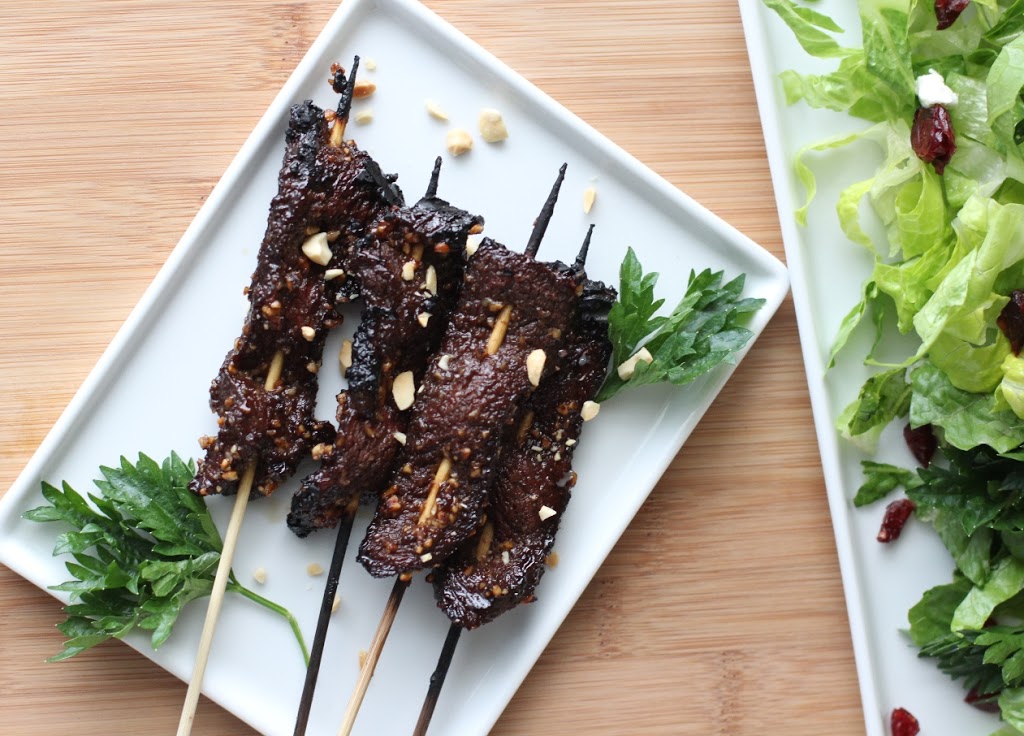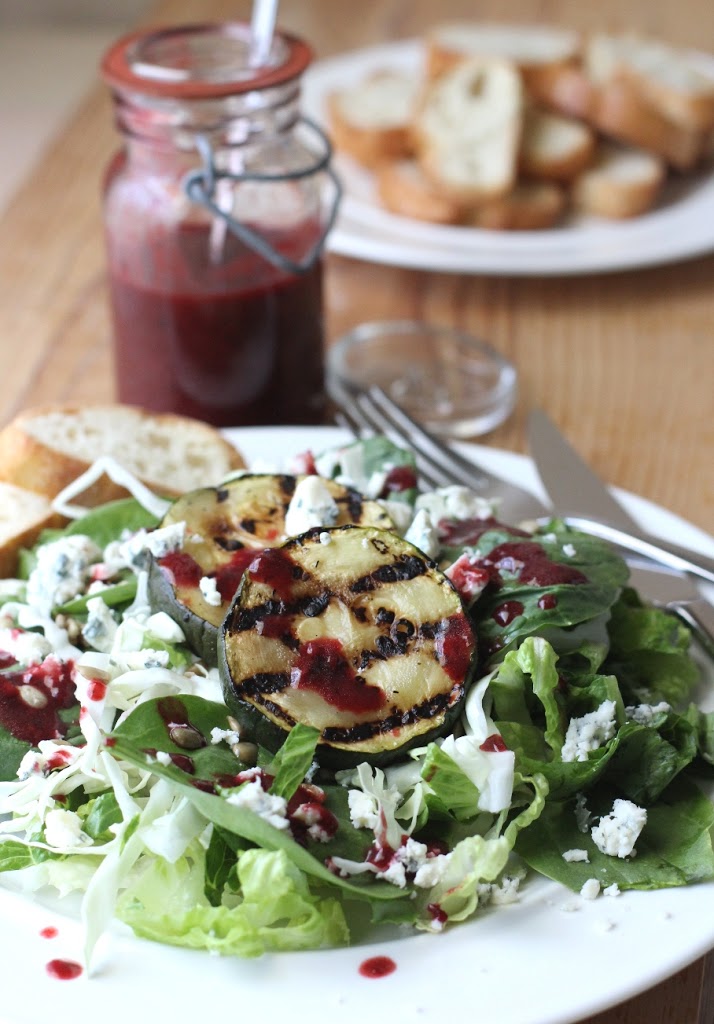Thank you to the California Olive Committee for sponsoring this post. Although I was compensated to write this post, all opinions are my own.
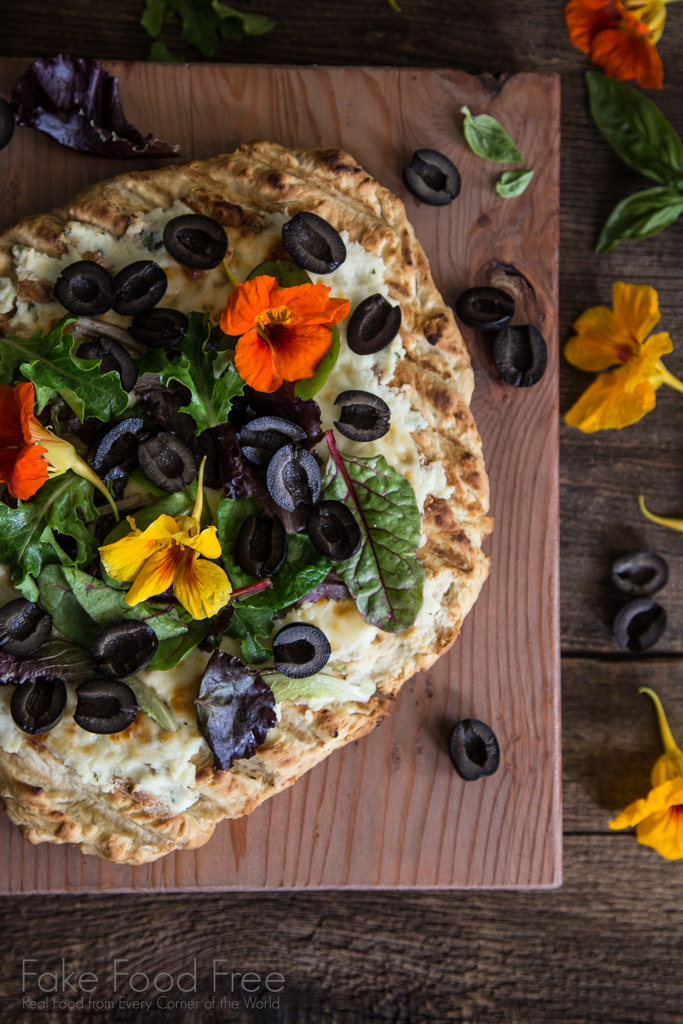
I drive by olive trees on a regular basis here in the South Central Valley.
I’m a little obsessed with them.
One, they are some of the prettiest trees out there, all willowy with draping branches and a color that can turn from deep green to steel blue depending on how the wind blows. Two, I am a heavy consumer of both extra virgin olive oil and ripe, or table, olives.
I was informed of a small fact soon after my identification of the olive tree, though. The olives that make these two products are not one in the same. Basically, there are oil olives and ripe olives. Their varieties, oil content, color, and culinary use is different.
I’ve learned quite a bit about oil olives over the past few years, but my knowledge of ripe olives was minimal. So, when I received an invitation from the California Olive Committee for a trip to St. Helena at the Culinary Institute of America (CIA) Greystone to fill my gap in knowledge, as you would expect, I quickly accepted. I soon hit the road for a lovely four hour drive from California’s Central Valley to the Napa Valley.
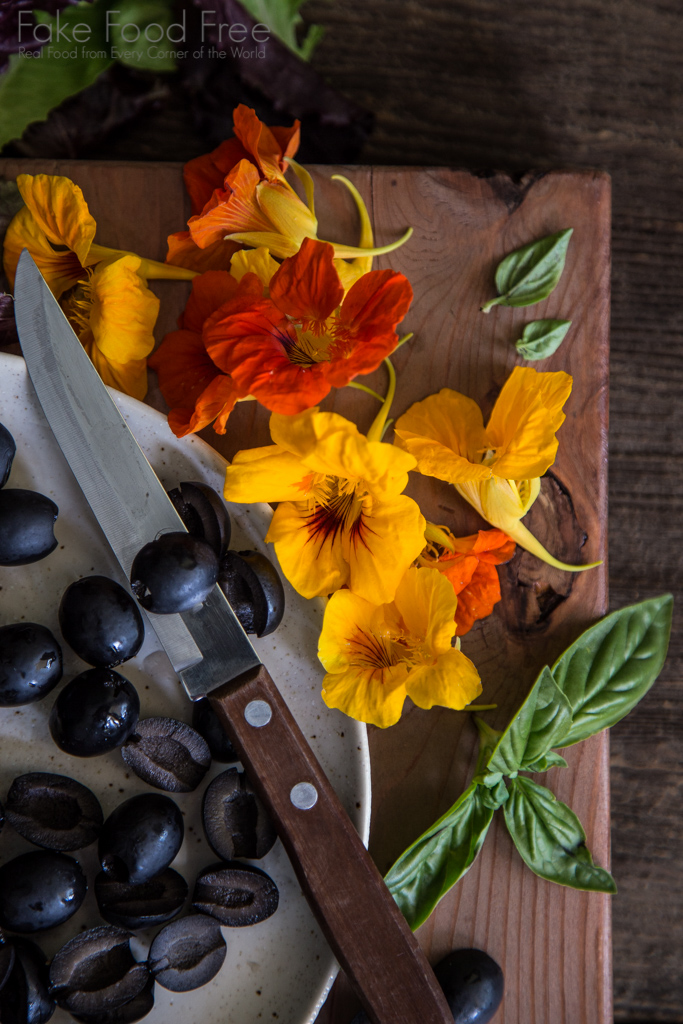
Along with a group of talented food folks, I spent an overnight trip in Napa learning from committee representatives, olive growers, and olive canners. We spent some of that time being inspired by CIA chefs who worked with Elise Bauer of Simply Recipes and her team to develop delicious foods made with ripe olives. We also had the opportunity to create a few recipes of our own.
6 Interesting Things I Learned About California Ripe Olives During My Time with the California Olive Committee
Two varieties: There are two main varieties of California Ripe Olives, the Manzanillo and Sevillano. These differ from olives for oil in that there are many more varieties with a higher natural oil content typically grown for oil. Ripe olives are also harvested a bit sooner in the fall season than oil olives, which sit on the tree longer to produce a higher oil content for squeezing. Considering that ripe olives won’t simply be squeezed, but rather eaten whole, farmers must be much more careful when harvesting them. Much of the ripe olive harvest is still done by hand.
All olives are green: Now I know what you are thinking, one of those two varieties I mentioned is green and the other is black. Nope. All olives are picked green. They turn the black color when exposed to oxygen bubbles during the brining process. (All olives must be brined to become edible.)
Family farms: Ninety-five percent of olives grown in the U.S. are produced in California and it’s very much a family-farm operation. I’ve learned that this is the case for much of California’s agriculture. The community includes two canneries and about 900 family farms. Many of these farms are multi-generational with lots that range from 5 acres to 1,000.
You can smoke olives and they are outstanding: Elise and CIA Chef Paul Irving showed us how amazing smoked olives can be. They used a kitchen smoking method, but the same can be done on the grill if you have a smoker. We had them blended into a goat cheese spread and in quesadillas. A huge winner.
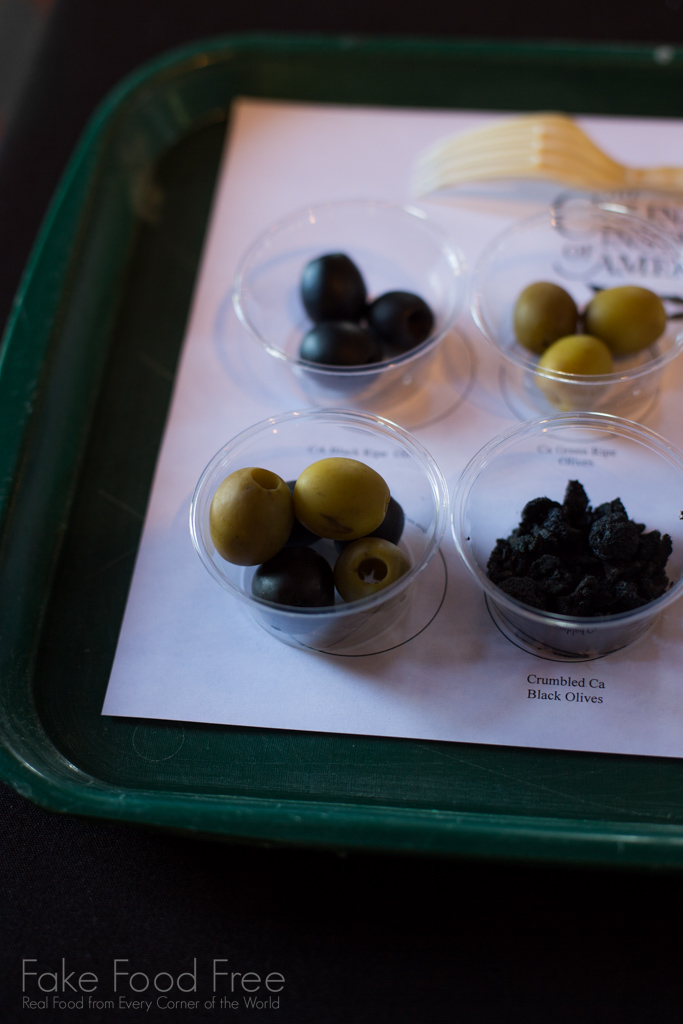
You can candy olives and they are also outstanding: This is a don’t knock it until you try it situation. I feel I’m pretty adventurous so I was eager to try the candied olives. Two techniques were used, a simple sugar solution and coating the olives in sugar for a few days. The balance of salty and sweet was perfect for my taste buds. I also enjoyed the slightly chewy texture.
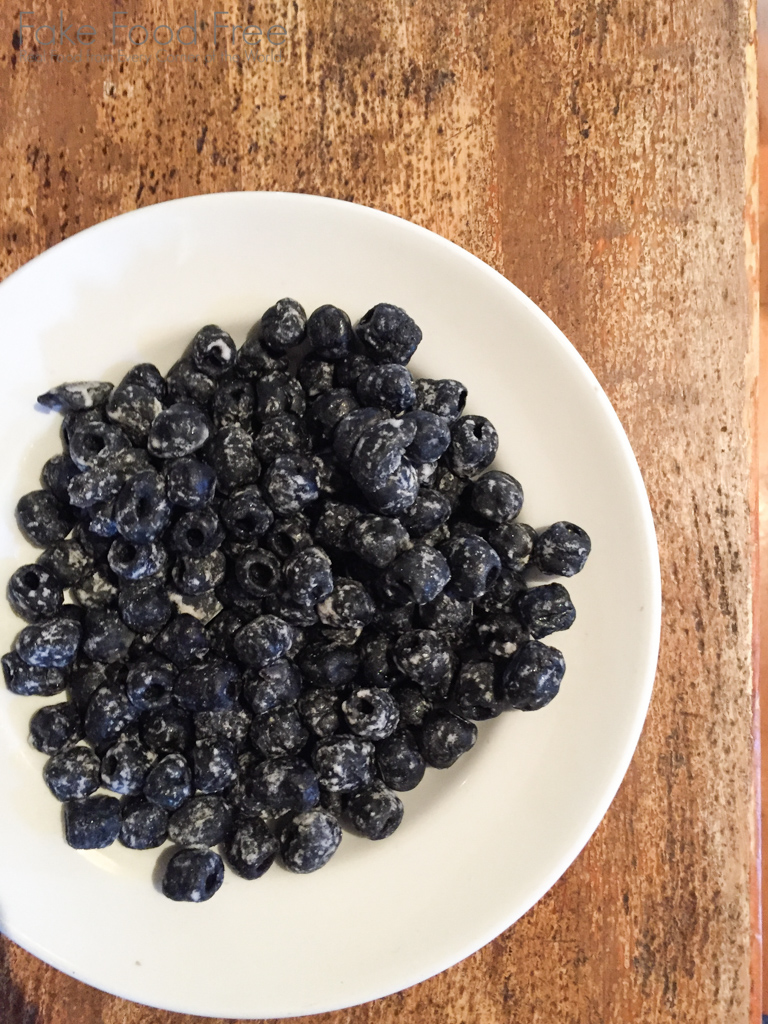
Dehydrated olives are great, too: Another preparation we tried were dehydrated and crumbled black olives. Oh, the possibilities. Salads, pizzas, this version has made me want to bite the bullet and finally get a dehydrator for the kitchen.
I mentioned that we were given the opportunity to do some group cooking. Full disclosure, I don’t do well in situations like this. I’m not competitive in my cooking and while I can cook, I would make a horrible chef.
It is a fact I realized years ago when I had to take culinary and hospitality courses that involved running a restaurant in our department in college while I was earning my degrees in nutritional sciences. I crack under pressure and I lack organization in the kitchen. I cook to the beat of my own drum. All qualities that would make me a horrible fit for a professional kitchen.
That being said, our team came together to have quite a blast. We also created some pretty excellent dishes, as did all of the teams. Below is eggplant with red pepper, onion, olives, lemon juice, and herbs. I’ve already created my own version of this by grilling eggplant at home and ate it all in two sittings.

Our claim to fame, though, was our gratin. Thinly sliced blue and fingerling potatoes with baby leeks, smoked black olives, and a cream sauce infused with fresh herbs.
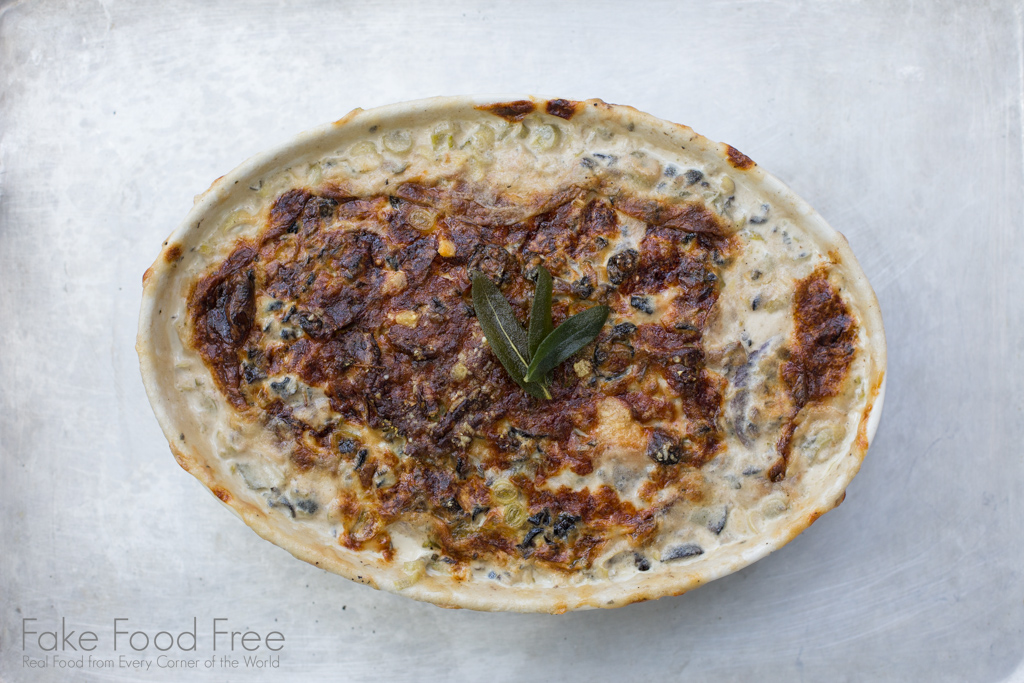
Upon returning home we were all asked to create a new recipe on our own to feature in a blog post.
Okay, so now I’m in my element, there is only one thing missing. A kitchen.
Our kitchen remodel was just completed last week! But that means at the time of making this recipe and writing this post, I was still turning to the grill outside.

A grilled flatbread feels like such a summer food to me and I thought it would be a nice way to highlight black olives. Visually, I was especially excited about how well the black would go with the beautiful nasturtiums that I planted this year. These edible flowers might be my greatest success when it comes to growing food. They have exploded in the backyard. I’ve been dying to use them in a recipe and this flatbread was a perfect fit.
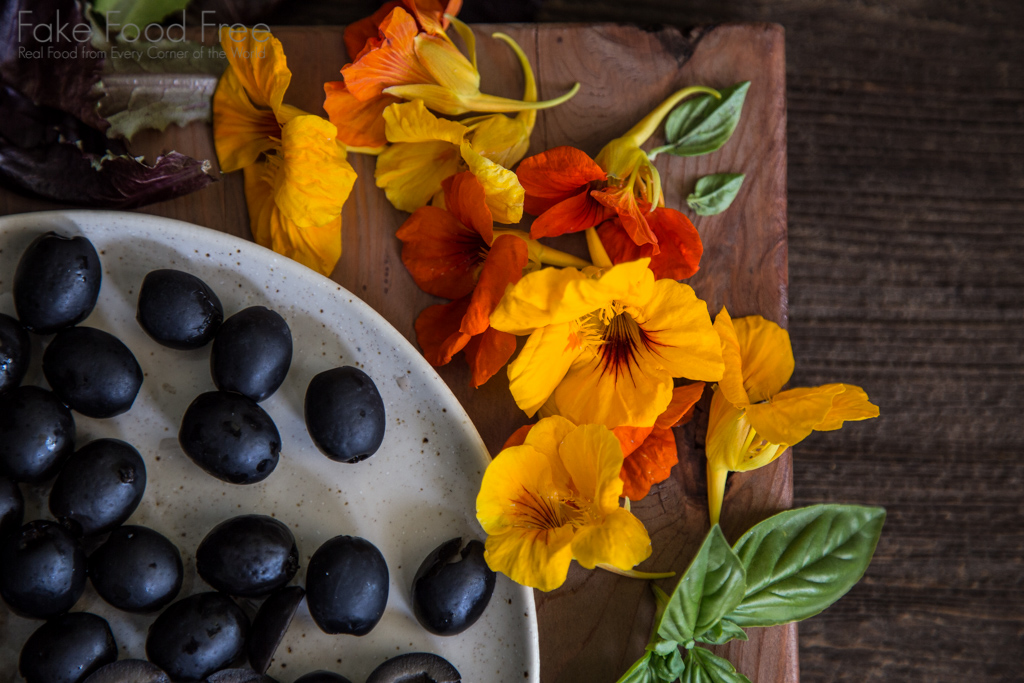
If you’ve never eaten one before, they have a slight earthy and peppery flavor which pairs nicely with buttery black olives. I teamed this up with a creamy ricotta spread mixed with fresh garlic and basil from the herb garden. It’s topped with provolone and then mixed greens dressed in lemon juice before the black olives are scattered heavily over the top. Garnish with the flowers and it’s ready to serve.
You can use any of your favorite pizza dough here – white, whole grain, gluten-free – as long as you can grill it, it will work. Just make sure it is enough to make roughly a 12 inch pizza. Rub the exterior of the dough well with olive oil, or brush the grill grate. You are basically going to sear the outside of each side of the crust before adding the cheeses, then it will cook through as the cheese melts and browns on top.
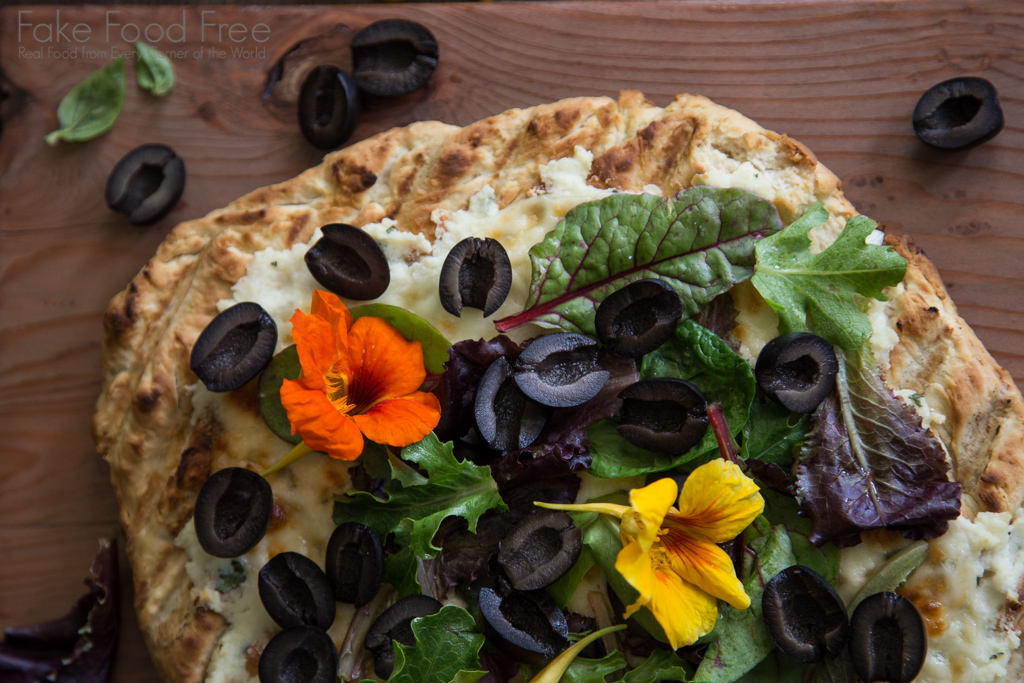
This pizza can be taken any direction you’d like. An addition of prosciutto definitely wouldn’t hurt and some grilled onion for a touch of sweetness would be equally as delicious. You can also switch up your olive choices and use ripe green olives. Either way this grilled flatbread is an excellent summer meal or snack.
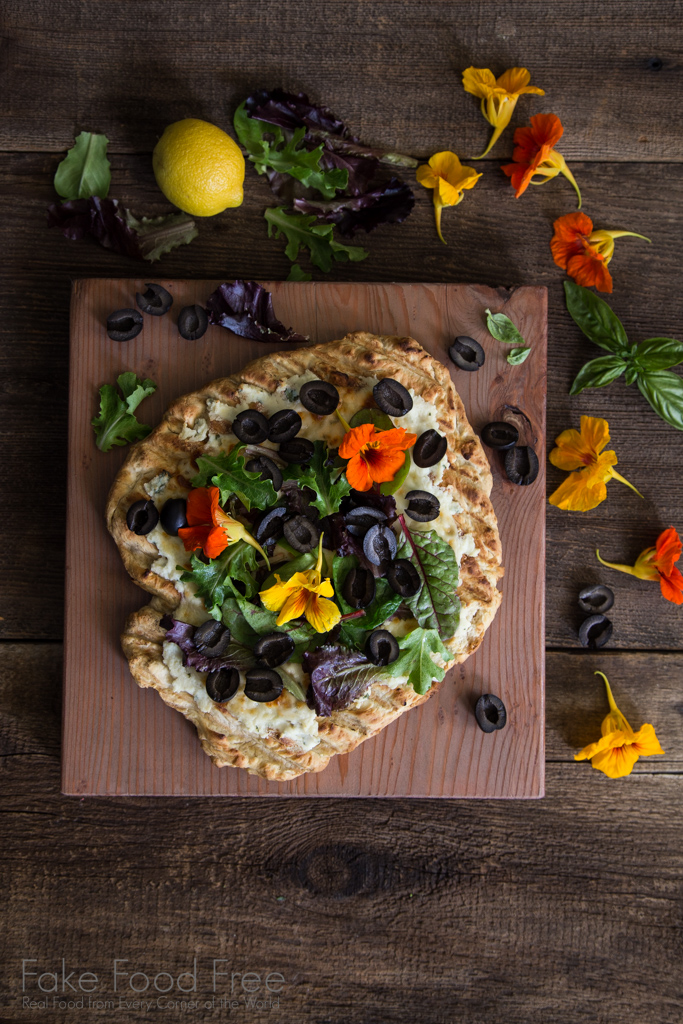
California Ripe Olive Grilled Flatbread with Basil Ricotta, Provolone, Lemon Greens, and Edible Flowers
Makes 4 to 6 servings, as a starter
What you’ll need:
1/3 cup whole milk ricotta cheese
5 large basil leaves, minced
1 clove garlic, grated
Pinch of fine sea salt
Dough for a 12-inch pizza, coated in olive oil
3 ounces Provolone cheese, sliced thin
1 cup spring greens
Juice of half a lemon
1 cup halved ripe black olives
4 to 6 edible flowers such as nasturtiums
How to make it:
Heat the grill to 400 to 425 degrees F.
Stir together the ricotta cheese, basil, garlic, and sea salt in a small bowl.
Roll or spread the pizza dough to about 12 inches. Place on the grill and let cook for 2 to 3 minutes, until the dough is seared and browned on the outside. Carefully flip and cook for 2 to 3 more minutes. Remove from the grill.
Select which side you wish to be the top of your pizza and spread with the ricotta. Layer with the slices of Provolone. Return the pizza to the grill, close the lid, and cook for about 7 minutes. Until the dough is cooked through and the cheese is bubbling and browned. Grilling times will vary depending on your crust and how opening your grill influences temperature fluctuations.
While the pizza cooks, add the greens to a medium bowl and toss with the lemon juice.
Remove the pizza from the grill. Top with the greens, olives, and flowers. Slice to serve warm.
You can check out all the fun creations from attendees and more facts about ripe olives from the weekend by looking up the #CalRipeOlives hashtag on Instagram. You can also follow the California Olive Committee on their Facebook page.

